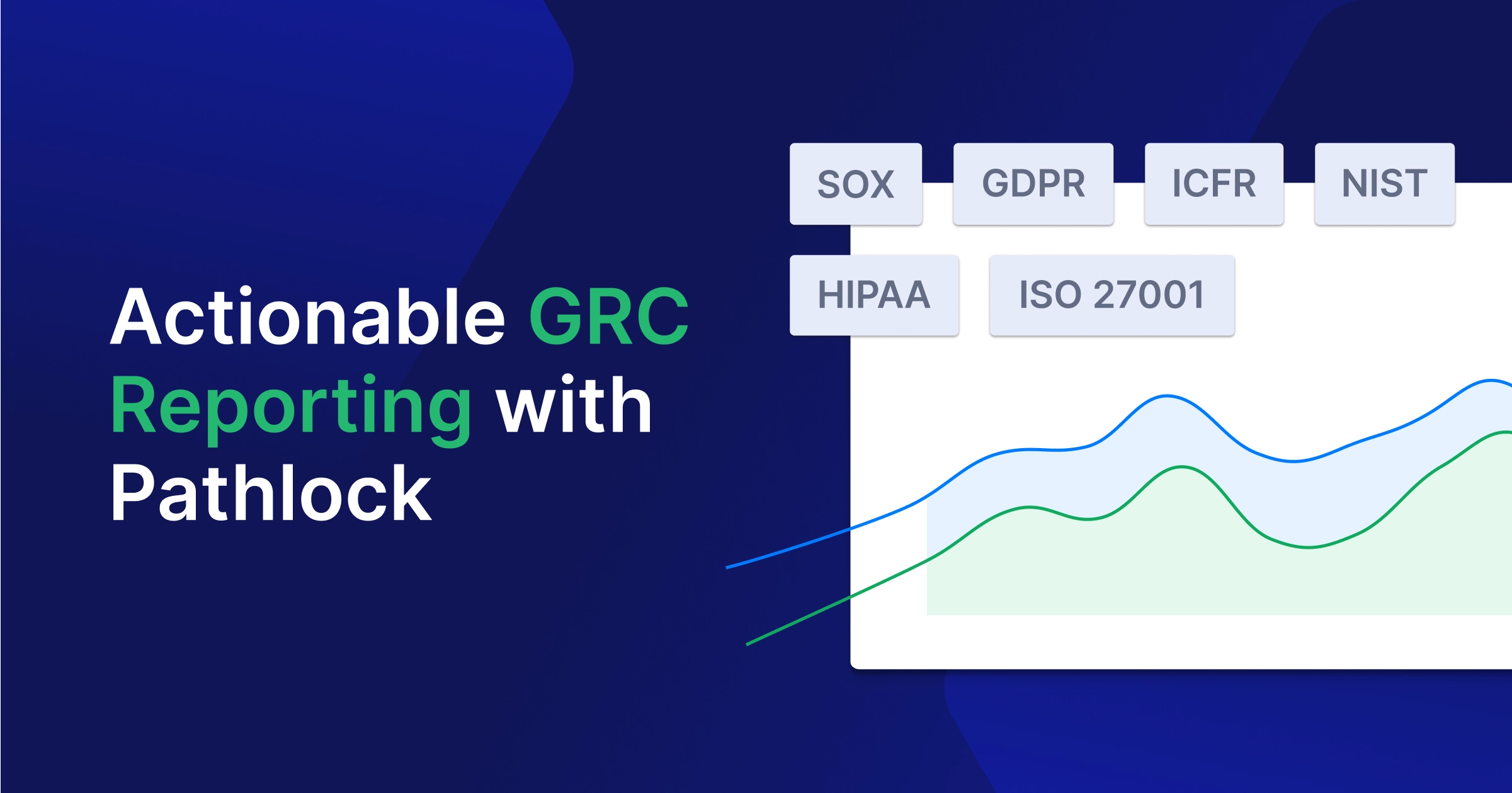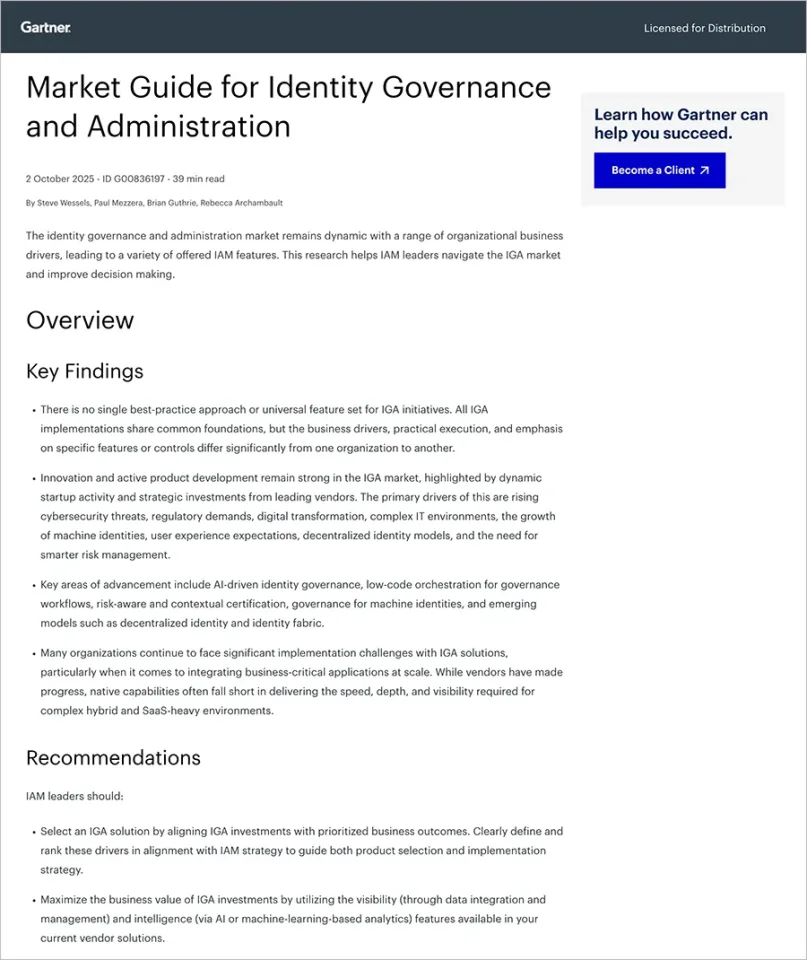Ensuring that the right people have access to the right resources at the right time is a crucial component not just of employee productivity but also organizational security. Known as “IAM,” Identity and Access Management provisioning and deprovisioning are two fundamental processes that play a crucial role in organizational security. With most cyberattacks resulting from a compromised user or poorly trained team member, it is critical to maintain a secure and compliant access management process. In this comprehensive guide, we’ll explore the intricacies of IAM provisioning and deprovisioning, their lifecycle, and how Pathlock streamlines these processes for enhanced security and compliance.
The IAM Provisioning Lifecycle
The IAM provisioning lifecycle is a multi-step process that ensures the secure and efficient management of user access. It includes the following stages:
Initiation and Pre-access
The provisioning process begins with a request for access, typically initiated by an authorized manager or HR representative. This request is then reviewed and validated to ensure that it is in accordance with the organization’s policies and the user’s role and responsibilities.
Review and Approval
Once the request has been submitted it moves to the review and approval stage. Depending on the organization’s policies and the level of access requested, this stage may involve multiple stakeholders, such as managers, security teams, compliance officers, or data owners. The approval process exists to confirm that the requested access is necessary for the business and the user alike.
At this point, the access request undergoes a detailed review. Reviews involve both system and human actions. The IAM system compares the requested access to established rules and policies, considering the user’s role, department, and job function to verify that the requested access fits the user’s needs.
After a successful system review, the access request reaches the human approval stage. A senior authority, such as a manager or a department head, grants the approval. They confirm that the requested access aligns with the user’s role. Only after this approval does the system assign the access rights.
Monitoring and Maintenance
After access has been granted, the provisioning lifecycle enters the monitoring and maintenance phase. This stage involves periodic reviews of user access rights to ensure they remain valid and aligned with the user’s current role and responsibilities. Any changes in the user’s job function or responsibilities may trigger a review and potential adjustment of their access rights. It also includes regular reviews of user access rights to promptly identify and address possible security risks.
The maintenance phase involves regular updates to user access rights based on role changes and responsibilities. If a user changes roles or leaves the company, the system modifies or deletes their access rights as needed. This step ensures that users only possess the access they require, minimizing the risk of unauthorized or unneeded access.
Compliance and Reporting
Throughout the provisioning lifecycle, organizations must maintain detailed records and audit trails to demonstrate compliance with relevant regulatory requirements and internal policies. This stage involves generating reports, tracking access changes, and ensuring that all provisioning activities are properly documented.
The life cycle concludes with the compliance and reporting stage. The system generates comprehensive reports on user access rights and activities. These documents provide an understanding of the allocation of resources, the reasons behind it, and the timing. Additionally, they illustrate adherence to regulatory guidelines by demonstrating the effectiveness of the company’s processes to control access.
Managing the IAM provisioning lifecycle is a continuous process that requires ongoing attention and adjustments to match changing user needs and roles. By properly managing this lifecycle, organizations can ensure secure and efficient access management.
What is IAM Deprovisioning?
IAM deprovisioning is the process of revoking or terminating access rights and privileges from users, applications, or systems. This process is essential for maintaining a secure and compliant IT environment by ensuring that former employees, contractors, or decommissioned systems no longer have access to sensitive data or critical resources.
Common Deprovisioning Scenarios
Deprovisioning is typically triggered by various scenarios, such as:
Employee offboarding
When an employee leaves the organization, either voluntarily or involuntarily, their access rights must be promptly revoked. This process ensures that the former employee cannot access sensitive data or systems, reducing the risk of data breaches or unauthorized access.
Role changes
As employees transition to new roles or responsibilities within the organization, their access rights may need to be adjusted accordingly. Deprovisioning their previous access and provisioning new access rights based on their new role ensures that they have the necessary permissions to perform their new duties while preventing unauthorized access to resources they no longer need.
Termination of service access
In addition to managing user access, organizations must also deprovision access for decommissioned applications, services, or systems. This process ensures that unused or obsolete resources are properly secured and do not represent a potential security risk.
Managing IAM Provisioning and Deprovisioning
IAM Provisioning manages digital identities, representing individuals, applications, or services. These identities include attributes like usernames, email addresses, roles, and permissions. Provisioning assigns these identities access based on their roles within the organization, ensuring individuals can perform their responsibilities effectively.
IAM Provisioning isn’t a one-time event but a continuous process that adapts to an organization’s needs. It reacts in real time to changes like new hires, terminations, and role changes. It’s the gear that makes an organization’s access management agile and efficient in a dynamic environment.
Effective management of IAM provisioning and deprovisioning processes is crucial for maintaining a secure and compliant IT environment. Best practices for integration include:
Best practices for integration
- Establishing clear policies and procedures for provisioning and deprovisioning processes
- Automating workflows to streamline the process and reduce manual errors
- Centralizing access management for better visibility and control
- Implementing robust identity governance and access review processes
Addressing challenges
Organizations often face challenges when managing IAM provisioning and deprovisioning, such as:
- Multi-cloud and hybrid infrastructures: Managing access across multiple cloud platforms and on-premises systems can be complex and time-consuming.
- Lack of visibility: Without a centralized view of user access rights, it becomes challenging to identify and address potential security risks or compliance violations.
- Manual processes: Relying on manual processes for provisioning and deprovisioning can be error-prone and inefficient, leading to potential security gaps or delays in granting or revoking access.
To overcome these challenges, organizations can leverage advanced IAM solutions that provide comprehensive visibility, automated workflows, and centralized access management across diverse IT environments.
Ensuring Compliance Through Effective IAM Provisioning
Though IAM is largely concerned with effective provisioning and deprovisioning processes, these processes are also crucial for maintaining compliance with various regulatory requirements and industry standards. At this point, it is critical to make the shift from access management to access governance. Regulations such as GDPR, HIPAA, PCI-DSS, and SOX have specific guidelines for managing access to sensitive data and systems.
By implementing robust IAM and IGA processes, organizations can demonstrate their commitment to data privacy and security, protecting sensitive information from unauthorized access or misuse. Additionally, comprehensive audit trails and reporting capabilities facilitate compliance audits and help organizations identify and address potential compliance gaps.
Governing User Access with Pathlock
Pathlock’s Application Access Governance (AAG) product enables you to provision and deprovision users across multiple applications, thereby centralizing IAM and providing a complete view of user access. Pathlock AAG also goes beyond just IAM to deliver IGA capabilities at a cross-application level.
With a focus on real-time access governance, our modules continuously monitor access risks, maintaining updated knowledge of your organization’s access details. With Pathlock, you can streamline the detection and mitigation of access risks to avoid unauthorized access and potential data breaches.
Advanced attribute-based access controls form the foundation of Pathlock’s solutions. These controls ensure users have access only to necessary data and systems based on their roles and the context of access, thereby enhancing security and simplifying user access management.
Pathlock offers extensive auditing and reporting capacities, enabling monitoring of user activity and access rights. This information allows for informed decisions on strategy adjustments to best serve your organization.
Automation forms another key component of Pathlock’s solutions. Automating procedures like user provisioning, password resets, and access reviews helps save time, reduce error chances, and improve overall organizational security.
Investing in the right technology is critical to developing an effective governance strategy. Starting with IAM, as your organization matures, Pathlock provides a range of application access governance capabilities that enable you to future-proof your technology investment.
Schedule a demo today and learn how Pathlock can help you set your access governance strategy in motion.



